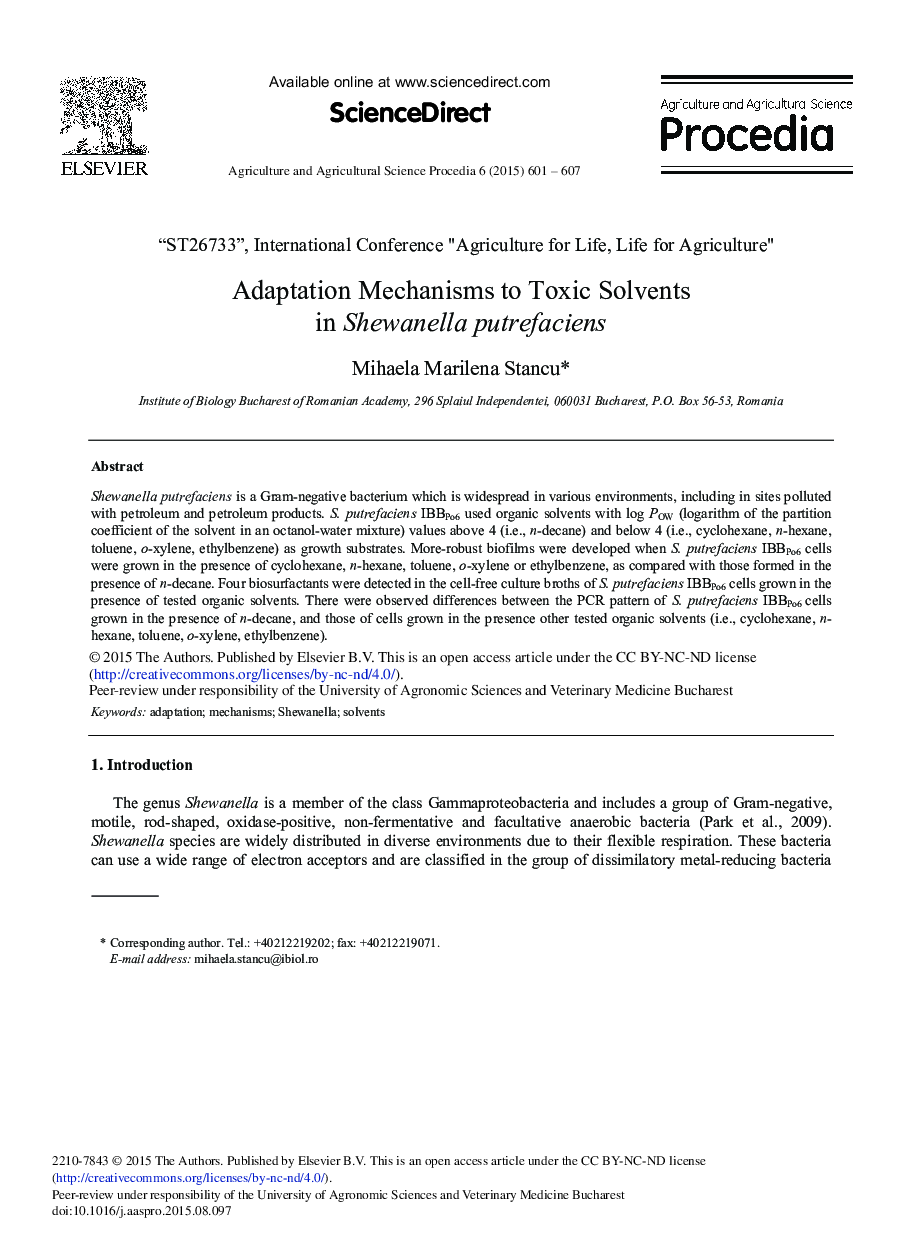| Article ID | Journal | Published Year | Pages | File Type |
|---|---|---|---|---|
| 4492486 | Agriculture and Agricultural Science Procedia | 2015 | 7 Pages |
Shewanella putrefaciens is a Gram-negative bacterium which is widespread in various environments, including in sites polluted with petroleum and petroleum products. S. putrefaciens IBBPo6 used organic solvents with log POW (logarithm of the partition coefficient of the solvent in an octanol-water mixture) values above 4 (i.e., n-decane) and below 4 (i.e., cyclohexane, n-hexane, toluene, o-xylene, ethylbenzene) as growth substrates. More-robust biofilms were developed when S. putrefaciens IBBPo6 cells were grown in the presence of cyclohexane, n-hexane, toluene, o-xylene or ethylbenzene, as compared with those formed in the presence of n-decane. Four biosurfactants were detected in the cell-free culture broths of S. putrefaciens IBBPo6 cells grown in the presence of tested organic solvents. There were observed differences between the PCR pattern of S. putrefaciens IBBPo6 cells grown in the presence of n-decane, and those of cells grown in the presence other tested organic solvents (i.e., cyclohexane, n-hexane, toluene, o-xylene, ethylbenzene).
